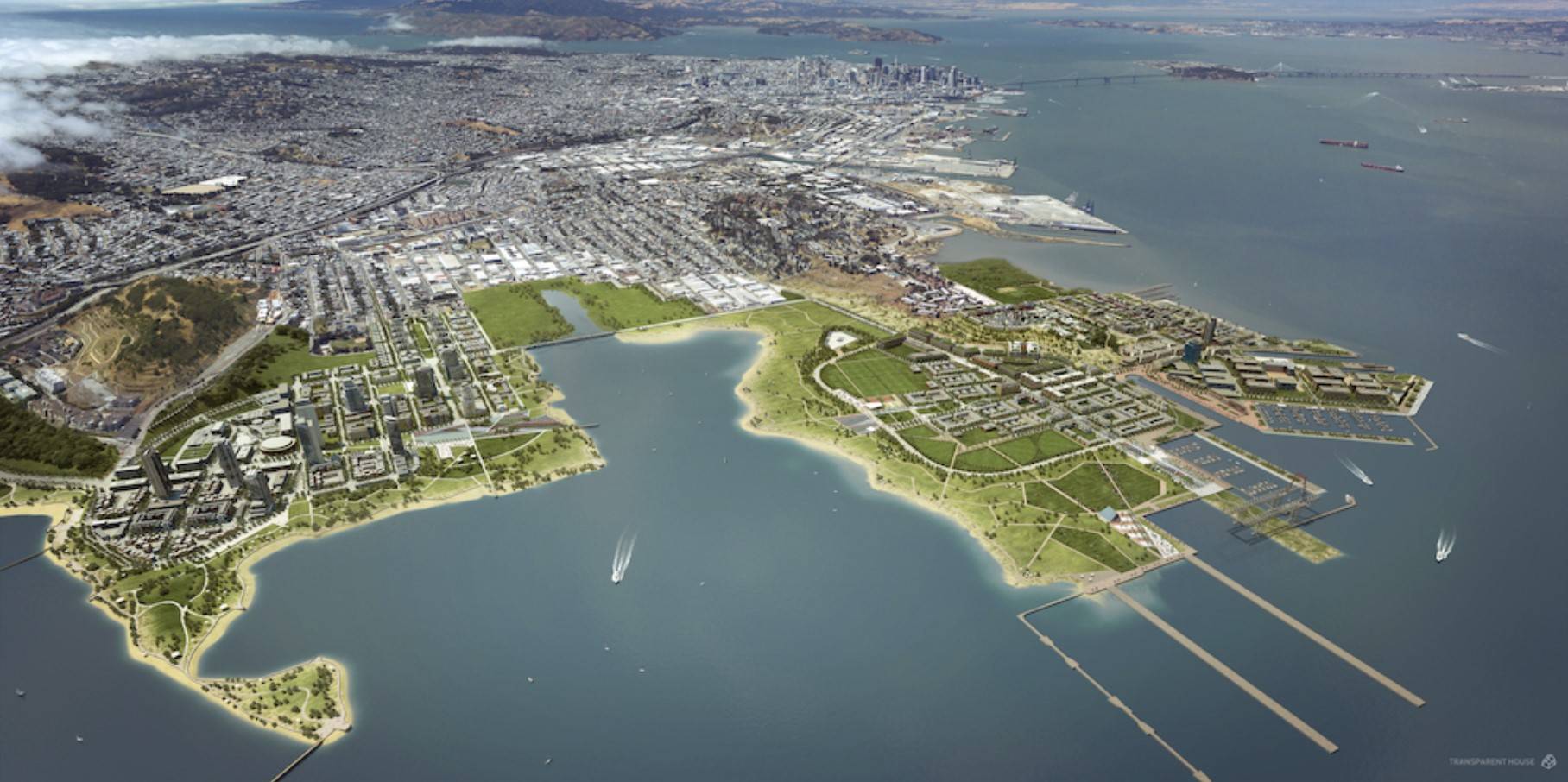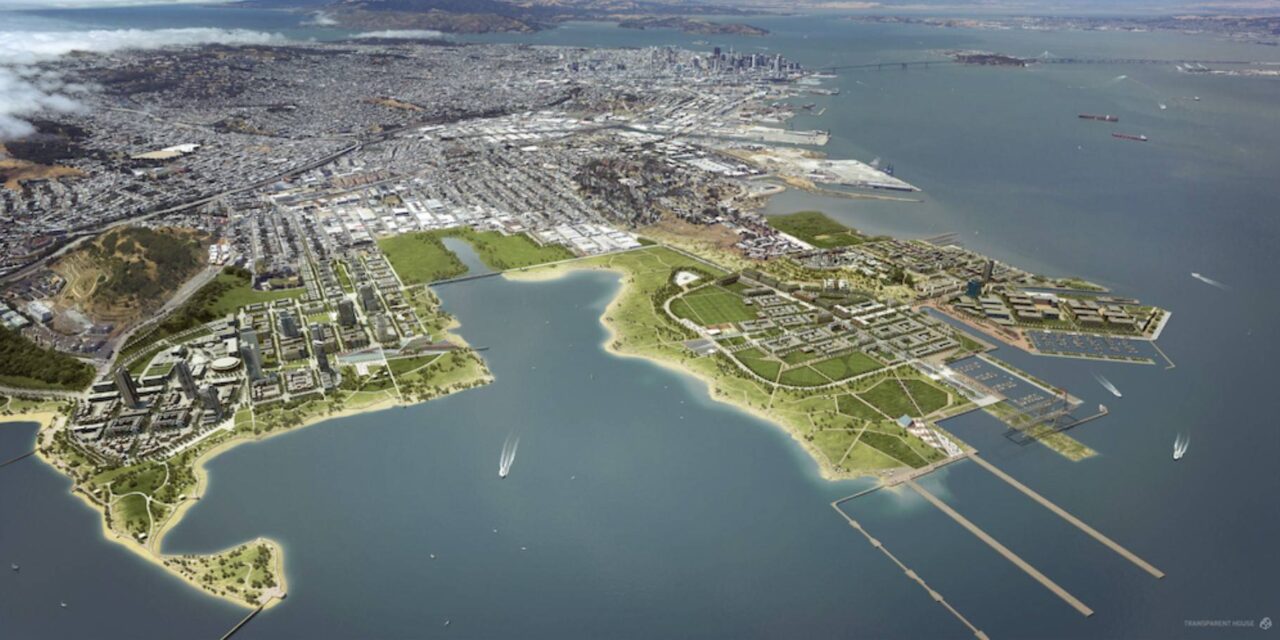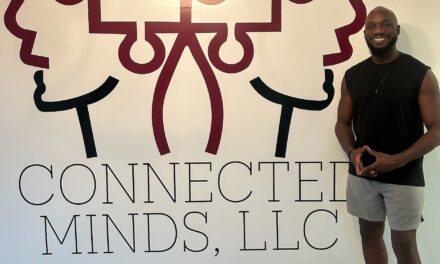
 This is a 2014 architect’s rendering of housing development then proposed at Candlestick and Hunters Point.
This is a 2014 architect’s rendering of housing development then proposed at Candlestick and Hunters Point.
by Julian Davis and Ed Donaldson
Reader alert: The next OCII Commission meeting is on Tuesday, Sept. 4, at 1 p.m. To provide public comment, attend the meeting in person or remotely via teleconference: https://sfocii.org/remotemeeting-information.
Please email or call Thor Kaslofsky, executive director of the Office of Community Investment and Infrastructure, to express your concerns and support for Certificate of Preference (COP) replacement housing set-asides and equitable development in Candlestick and Hunters Point: [email protected], 415-749-2588.
Please also direct emails, letters and phone calls to the commission: Office of Community Investment and Infrastructure, 1 South Van Ness Ave., Fifth Floor, San Francisco, CA 94103, [email protected].
As chronicled in a recent report by Stanford Law School, San Francisco has an unrivaled track record of inequitable development, displacement, redlining and intentionally racist policies depriving its Black citizens of opportunities to build intergenerational wealth and to access affordable housing, living wage jobs, quality education and health care. Tragically, this lamentable situation continues unabated in the present day, even as recent conversations, movements and proposals for reparations have advanced at the local, state and federal level – even as the city has received substantial funding from the federal government in recent years to address poverty – and even as San Francisco Democrats are poised to take over our national leadership.
At the end of February, at the conclusion of a multi-year process culminating in recommendations from the African American Reparations Advisory Committee, San Francisco formally apologized to African Americans for the city’s role in perpetuating racism and discrimination. As most everyone is aware, when it comes to corrective justice, an apology is an important and necessary ingredient, but it is also the absolute bare minimum that is owed to aggrieved parties.
City leaders have embraced none of the recommendations submitted by the committee, including a modest proposal for a reparations office to administer programmatic initiatives aimed at eliminating San Francisco’s egregious racial wealth gap. Meanwhile, as outlined below, the wheels and gears of racial injustice continue to turn and grind with no end in sight.
Replacement Housing and Certificates of Preference
With the passage of the San Francisco Replacement Housing Act (SB 593) last year, a rare opportunity emerged to accomplish a fair measure of justice by developing long overdue housing for communities displaced during the redevelopment era. Problematically, there is currently no plan in place to ensure that housing developed pursuant to the act benefits the communities that were impacted by redevelopment. Despite the compelling narrative of support for dispossessed communities that was promoted to support its passage, the act technically aims to build new units without appropriate regard for who inhabits them.
Auspiciously, there exists a mechanism to ensure that the descendants of displaced families have access to replacement housing. Owing to persistent advocacy on the part of community members appointed to advise the Office of Community Investment and Infrastructure (OCII), the City’s Certificate of Preference (COP) program has been effectively transformed from a program that was designed to fail into one that has potential to deliver on long neglected promises. Now, all lineal descendants of redevelopment displacees qualify for first preference for many of the City’s affordable housing units.
Nothing could be more rational and common sensical than linking SB 593 replacement housing with descendants of displaced families by setting aside these units for descendant certificate-holders. Sadly, however, the leadership of OCII and its director, Mr. Thor Kaslofsky, have thus far been unmoved by this popular idea. A recently circulated draft resolution on implementation of SB 593, includes none of the community’s proposed enhancements to the COP program which included, first and foremost, a set-aside of replacement units for descendant certificate holders.
It’s not too late, however. OCII is currently deciding on policies and strategies for the anticipated replacement housing. Mr. Kaslofsky today has the power to recommend and realize these aims.
Bayview, Candlestick and Hunters Point
Despite promises made over 15 years ago by the developer Lennar and its spin-off company Five Points, there has been extremely little progress made on the developer’s commitments. These promises, which included the development of over 7,200 housing units at Candlestick, the creation of living-wage jobs, and the construction of essential infrastructure like parks and schools were central to their 2010 Development and Community Benefits Agreement (CBA) with the City.
In the meantime, the community’s affordable housing and other needs have been sidelined, with only 337 units completed, while Black residents of Bayview Hunters Point continue to face displacement, their numbers dwindling from 34% of the population in 2010 to less than 27% today.
Instead of delivering on their commitments, the developer has repeatedly delayed the project, missing multiple real estate cycles and deadlines, and is now seeking to double the City’s commitment to over $3 billion in public funding – six times the amount initially requested – to develop an “Innovation District” at Candlestick Point with nearly 2 million square feet of office space.
The eye-catching proposal will only further drive displacement without any of the long overdue payments of $40 million plus dollars for housing, jobs and education to ensure the Bay View community benefits from the planned development. Presented without adequate community input, it clearly prioritizes corporate interests over community needs and offers little to nothing of the promised housing and job opportunities for local residents.
The situation is further vexed by the ongoing environmental issues at the nearby Hunters Point Naval Shipyard, where toxic contamination remains a significant concern. Despite a 2022 Grand Jury report highlighting the failures in the cleanup process, the city has yet to achieve the full remediation that voters overwhelmingly supported in Proposition P nearly 24 years ago.
Unfortunately, demands that any future development at Candlestick Point be contingent on a comprehensive cleanup of the Shipyard and a firm, enforceable timeline for the promised housing and infrastructure projects have so far gone unheeded. In light of its devastating history of inequitable development, it is imperative that San Francisco’s leaders hold this developer accountable.
The OCII, under the direction of Mr. Kaslofsky, appears ready to rubber stamp the proposed no-strings attached hand-outs for this developer and recommend them to the Planning Commission and the Board of Supervisors, who are both slated to take up the proposals next month.
Once again, however, there is time to right the ship and, once again, the power to intervene today lies with Mr. Kaslofsky’s OCII. Before any additional public funds are allocated, the City must enforce commitments made to the community, including the completion of housing units, infrastructure, jobs and environmental cleanup. Moreover, the community deserves a continued voice in the development process to ensure that future projects benefit the residents of Bayview, Candlestick and Hunters Point as promised.
Innovation with integrity: Ensuring community benefits
The developer’s shift in focus toward an “Innovation District” at Candlestick Point threatens to exacerbate all the pressing issues the Bay View community has long fought against: displacement, economic exclusion and environmental injustice. At the heart of the issue is a pattern of neglect and prioritization of corporate interests over the needs of the local community.
The response to these challenges requires a completely different approach that integrates intentional equity strategies into the planning and execution of infrastructure and development projects. This includes ensuring that historically marginalized communities benefit from the economic opportunities these developments present.
One key strategy is community-driven planning and engagement, where residents are actively involved in decision-making processes, ensuring that development aligns with their cultural and social values. Cultural and social programming, health and social services, and sustainable development are also critical. Hosting community events, offering accessible healthcare, and prioritizing environmental justice through green development are all strategies that integrate the community into an innovation hub’s ecosystem.
Additionally, workforce development programs tailored to the needs of the innovation hub can provide residents with the skills necessary to thrive in new job markets. Vocational training and partnerships with educational institutions can bridge the skills gap for local residents, ensuring that they are not left behind as new economic opportunities emerge.
Anti-displacement measures, such as affordable housing and community land trusts, can maintain the integrity of the community and prevent the gentrification that often accompanies large-scale commercial development projects. Such approaches ensure that innovation hubs do not become tools of displacement but rather catalysts for inclusive growth.
Support for local entrepreneurship is another key element. Innovation hubs should provide microfinance, grants and technical assistance to local entrepreneurs, ensuring that they can participate in and benefit from the innovation economy. Moreover, before approving an innovation district, OCII should finally make good on the promise of business certificates of preference and replicate the model implemented for residential certificates by extending the program to descendants of proprietors displaced under redevelopment.
Moreover, all these strategies align with the Biden-Harris Infrastructure Bill’s emphasis on support for minority-owned businesses, affordable housing requirements, community land trusts, equitable development, digital infrastructure, subsidized internet access, community wi-fi hubs, job training in high-demand fields, apprenticeships, education-to-workforce pipelines, green energy, energy efficiency and smart city planning.
So far, the developer’s “innovation district,” which aims vacuously to create a “Silicon Valley of the north,” utterly fails to address any of these key strategies. There are no commitments to invest in job training or to build affordable housing on a clear timeline. They have also failed to make their $10 million payment to an Education Improvement Fund or to build out a school, as promised, to prepare children for anticipated jobs.
Mr. Kaslofsky’s OCII could put safeguards in place today to ensure that prior promises of educational programming and good paying jobs are kept and that these massive public investments in development and infrastructure lift people out of poverty as intended. This is fully within his power to achieve but requires timely and decisive action to realize.
Impending school closures: Turning crisis into opportunity
The cascading effect of broken promises to build affordable housing and create living wage jobs has only aggravated the situation of SFUSD’s declining enrollment and what appears to be an inevitable wave of school closures starting next year.
Although according to Superintendent Matt Wayne, “SFUSD is one of the only school districts in the country to name equity as a key factor when changing its school portfolio,” many parents are rightly distrustful and terrified of the process. After years of well documented concerns about out-migration, they blame lack of oversight and bad decision-making by City leaders and school district administrators for the crisis.
The overwhelming trends suggest that school closures will disproportionately impact people of color and force more low-income families into tough decisions to relocate out of San Francisco. Proceeding with closures without any real implementation of equity strategies is deeply concerning. Community engagement, a cornerstone of inclusive decision-making, has been largely overlooked in advance of an anticipated release of the school closure plan next month, depriving parents and students of an effective voice in the process.
Moreover, the critical need for equitable resource allocation has been ignored, with no clear commitment to reinvest savings into the affected communities. Without targeted academic interventions for displaced students, those who are already struggling will be placed at even greater disadvantage. Without these essentials, the closures are likely to deepen educational disparities, particularly for students from underserved communities.
To mitigate the adverse effects of closures, the district must truly enhance the remaining schools, provide cultural competency training for staff, and mental health and wellness support for students and families to cope with the impact. This also requires forging partnerships with local and neighborhood organizations to monitor outcomes for displaced students.
So far there is no sign that these comprehensive strategies are being prioritized. The district’s disregard for them is not just a missed opportunity. It is a significant failure to uphold principles of equity and justice in education, leaving the most vulnerable students at the highest risk of the worst outcomes.
Instead of rewarding developers for broken promises, OCII’s focus should be on creating a timeline for construction of affordable family housing and enforcing payment of $10 million into the promised Education Fund to invest in our schools and prepare local kids for the jobs of the future.
The irony of Mr. Kaslofsky’s role in the fate of San Francisco’s future development could not be thicker – as it happens, a white army officer named Joseph Folsom became the wealthiest man in mid-19th century California after disenfranchising the estate of Mr. Kaslofsky’s ancestor, San Francisco’s Black founding father, William Leidesdorff. Leidesdorff, who also provided land for the first public school in the state of California, is no doubt rolling in his grave at Mission Dolores church.
The moral test facing San Francisco Democrats
With impending school closures, broken promises for affordable housing development, and a plan to replace hard-fought community benefits with an unvetted “Silicon Valley of the north,” San Francisco continues its unrivaled track record of racist city planning and development. The disingenuousness of its recent apology to African Americans could not be more apparent.
Moreover, all this is happening while San Francisco Democrats are poised to take over our national leadership. No one seriously doubts that prudence speaks in favor of their triumph, because the alternative is unthinkably horrid. But one wonders, from a moral perspective, how much it would really be deserved if they cannot do right in their own backyard.
Julian Davis is a San Francisco attorney, and Ed Donaldson is a member of the OCII Certificates of Preference (COP) Committee.




